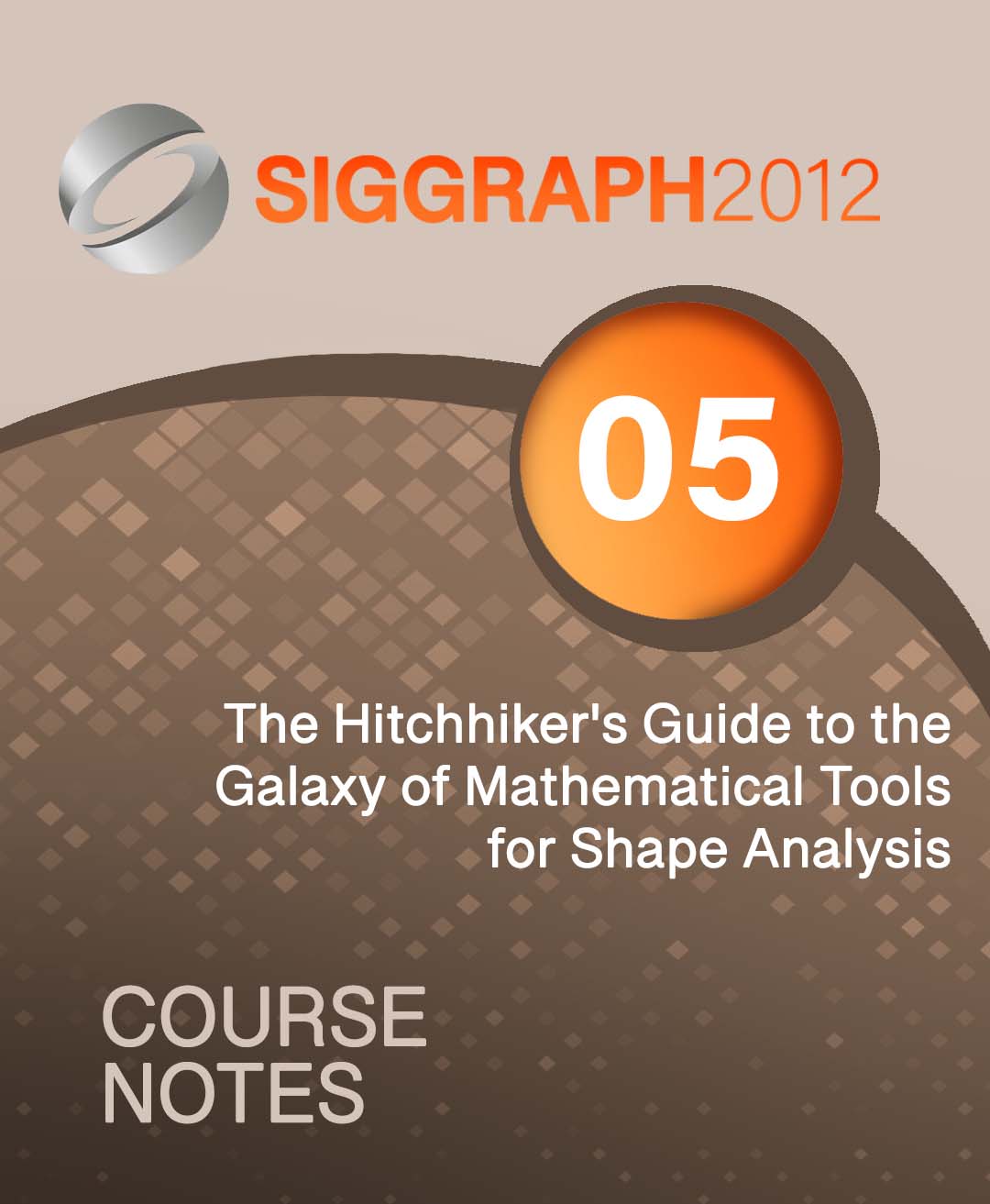“The Hitchhiker’s Guide to the Galaxy of Mathematical Tools for Shape Analysis” by Biasotti, Falcidieno, Giorgi and Spagnuolo
Conference:
Type(s):
Entry Number: 05
Title:
- The Hitchhiker's Guide to the Galaxy of Mathematical Tools for Shape Analysis
Course Organizer(s):
Presenter(s)/Author(s):
Abstract:
Abstract
This course is meant as a practical mathematical guide for researchers and practitioners who are willing to explore the new frontiers of 3D shape analysis, and thus require to manage the rather complex mathematical tools most methods rely on. The target audience includes therefore academia as well as industries or companies active in the shape analysis area. The attendees will familiarize with basic concepts in Differential Geometry, and proceed to advanced notions of Algebraic Topology, always keeping an eye on computational counterparts. The attendees will be shown how these notions can be transferred to practical solutions, through examples of applications to shape correspondence, symmetry detection, and shape retrieval.
The main reason for proposing a comprehensive (yet concise) mathematical guide is that a number of research solutions come from advances in pure and applied Mathematics, as well as from the re-reading of classical theories and their adaptation to the discrete setting. Being able to manage such complex mathematical tools is key to understanding and orienting among the growing number of different proposals. In a world where disciplines (fortunately) have blurred boundaries, we also believe this guide will give some advice on how to make mathematicians, other scientists and practitioners get along well with each other, that is, how to talk to each other – and get to understand each other. We hope that, at the end of the course, attendees will have an idea on how to find the right mathematical tools that match a bright intuitive idea, and how to strike a balance between being theoretically rigorous and offering computationally feasible solutions… possibly keeping our guide on their desks. The course is structured as a half-day course. We assume the participants have basic skills in Geometric Modelling and familiarity with basic concepts in Mathematics.




